TechRadar Verdict
The Elgato Facecam Pro is the world’s first webcam that shoots in 4K at 60fps. Thanks to Sony’s 1/1.8-inch Starvis sensor, it also delivers an impressive dynamic range and great noise handling. Meanwhile, the Elgato Premium AF lens offers fast and on-point auto-focusing in well-lit situations, and the new Camera Hub gives you a slew of tools for creative exposures. However, it’s also held back by an eye-watering price tag.
Pros
- +
4K at 60fps video resolution
- +
Wide dynamic range, great noise reduction
- +
Snappy auto-focusing in well-lit conditions
- +
Manual exposure via Camera Hub
Cons
- -
Definitely expensive for a webcam
- -
AF is slower in low light
- -
Pretty big for a webcam
Why you can trust TechRadar
Elgato Facecam Pro: One-minute review
The Elgato Facecam Pro is the webcam we never thought we needed until it showed up and showed us just how good we can have it. Ok, maybe for most of us, a 4K at 60fps webcam might be the dream, but it’s certainly not a necessity. After all, most of us only really use ours for video meetings with colleagues and video calls with friends and family, and we’re pretty sure none of them is going to look at your footage and say, “Ew, you’re so low-res right now!”
However, that doesn’t mean there isn’t a need for such a peripheral in this new world where content creation is everybody’s new “dream job.” So, while we might not all want to shell out a few hundred bucks/quid for a webcam, those who make their living live-streaming, creating YouTube videos, and/or making TikToks will certainly appreciate its worth.
There are two things that set the Elgato Facecam Pro apart from the sea of still amazing webcams on the planet: it’s got the largest sensor on a webcam, and it’s the first webcam to deliver 4K at 60fps videos. These – on top of the other features Elgato has stuffed in its 4.6 x 1.5 x 3.1-inch frame – make it an absolute game-changer for folks who rely on their webcams to pay the bills.
That’s a good thing since its price of entry is more than what most of us are willing to pay – it’s hardly a cheap webcam. The Elgato Facecam Pro isn’t the ideal webcam for the majority of the population, but it’s certainly the best webcam for quite a few users.
Elgato Facecam Pro: Price and availability
- How much does it cost? $299 / £299
- When is it available? Available now
- Where can you get it? Available in the US and the UK
Supported Resolutions: 2160p60, 2160p30, 1080p60, 1080p30, 720p60, 720p30
Sensor: 1/1.8” Sony Starvis CMOS sensor
Lens: Elgato Premium AF lens
Focus Range: 4 in - ∞
Aperture: f/2.0
Focal Length: 21mm
At $299 / £299, the Elgato Facecam Pro’s price tag is certainly an eye-watering revelation, especially to budding content creators who don’t have the budget to make TikTok videos on such a pricey webcam. However, it’s worth bearing in mind that its older brother, the Elgato Facecam, was $199 / £189 at launch, so you are looking at a premium webcam line here.
That price is also understandable considering you’re getting a larger camera sensor and 4K at 60fps shooting capabilities. It also makes sense if you take a look at the competition. Razer’s current premium webcam, the Razer Kiyo Pro, will set you back $199 (£199, AU$329), and that tops at 1080p at 60fps and only has USB connectivity. So, paying $100 / £100 for more features, a considerably higher resolution, and a bigger sensor isn’t really that big of a stretch.
That said, it is still pretty expensive for many streamers and content creators, let alone most webcam users. So, we’re knocking a point and a half off the Elgato Facecam Pro’s value rating because of that.
Sign up for breaking news, reviews, opinion, top tech deals, and more.
- Value: 3.5 / 5
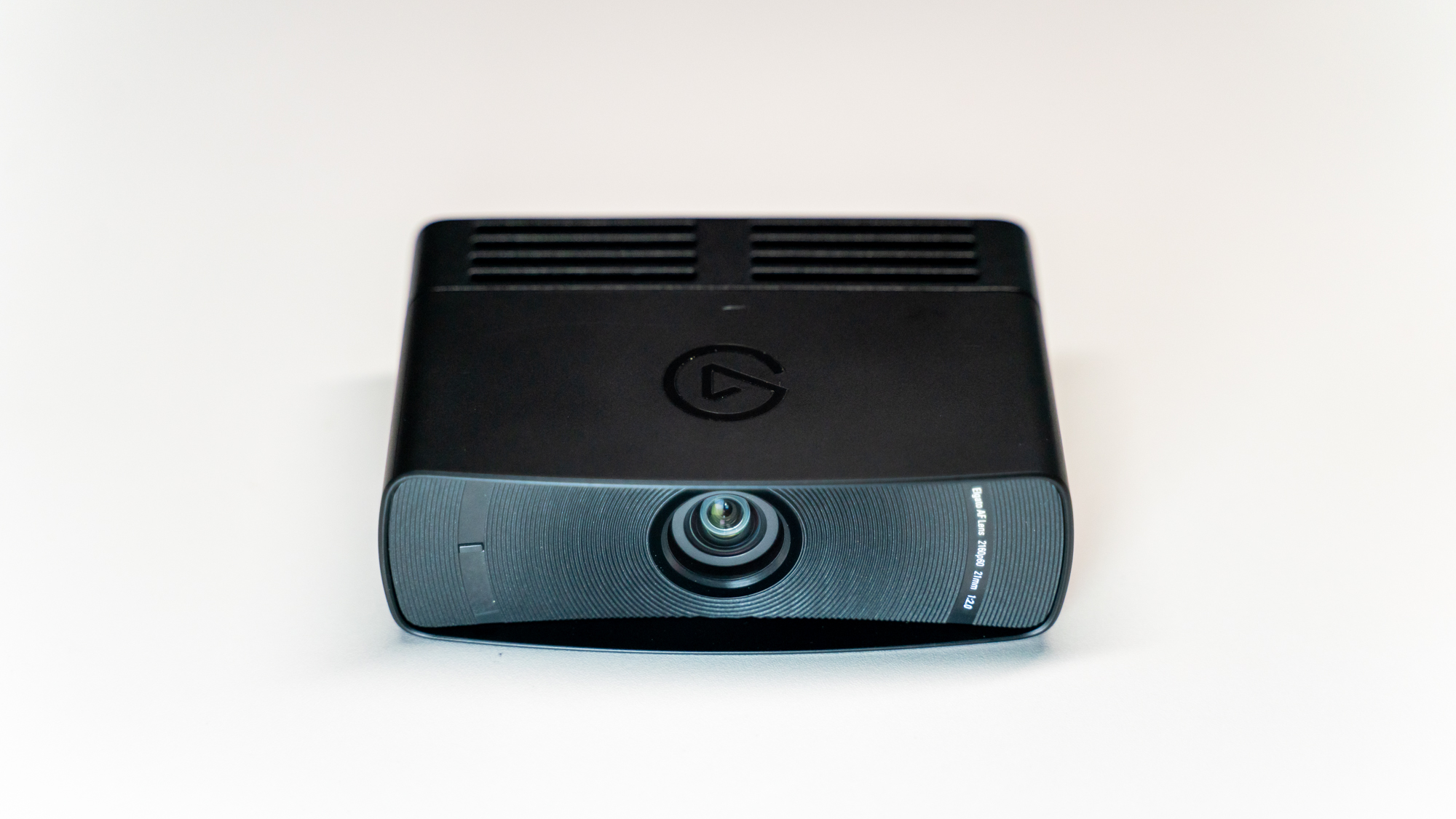
Elgato Facecam Pro: Design
- It’s a massive webcam
- Plug-and-play setup, USB-C connectivity
- No privacy shutter or cover
The first thing you’ll likely notice about the Elgato Facecam Pro is its size. At 4.6 x 1.5 x 3.1 inches, it is a sizable one – almost double the size of the Elgato Facecam – with what we assume are vents near the back to minimize overheating of its more powerful innards.
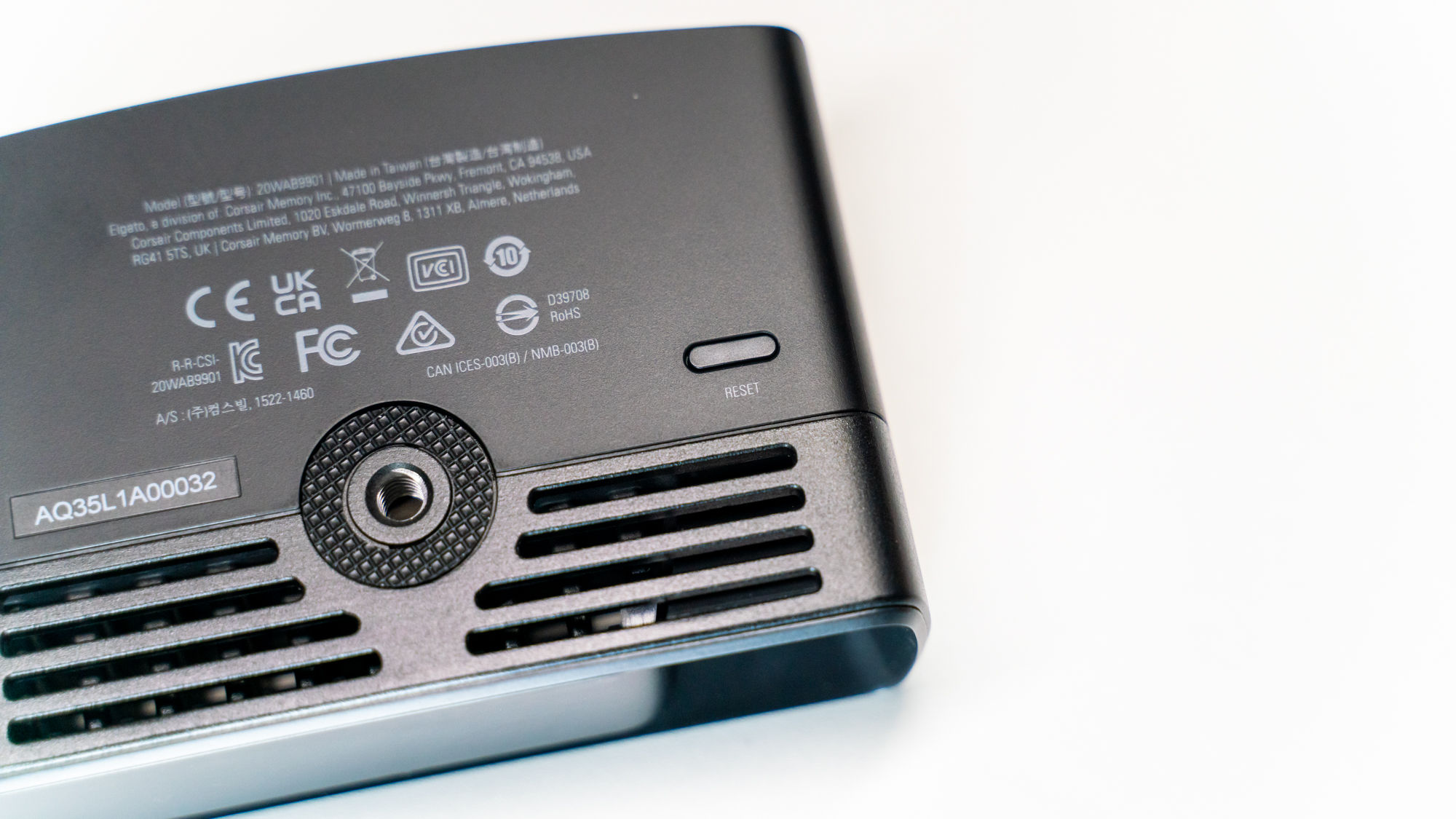
Its size and the vents make it look legit, more like the pro equipment it is rather than a consumer webcam. It’s fairly lightweight for its size, thanks in large part to its plastic construction. However, at 240g (0.53lb) without the mount, it might be too big or heavy to mount on a laptop, even a 17-inch one.
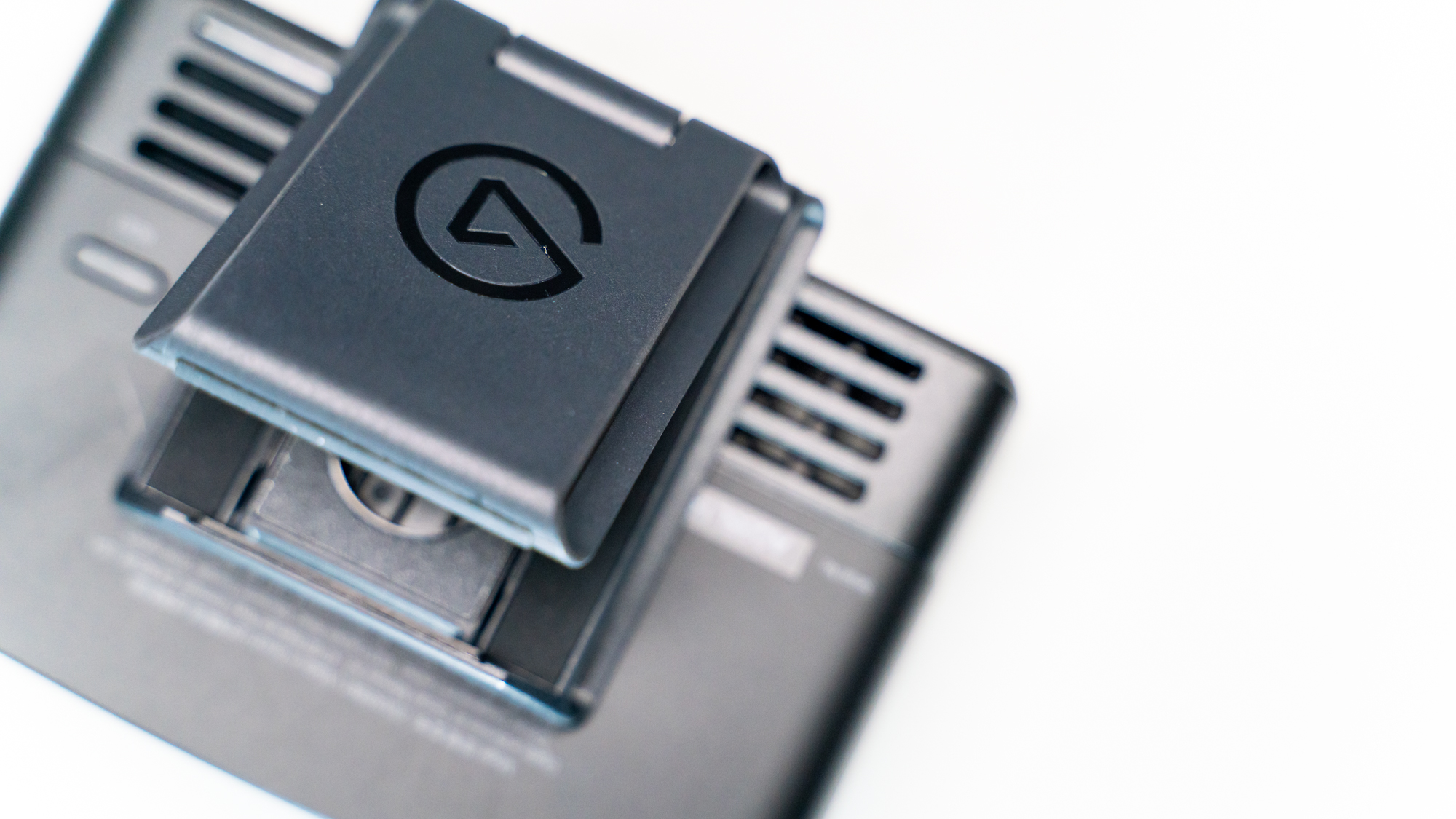
You might want to consider investing in one of Elgato’s standalone mounts – like the Mini Mount – if you’re traveling and only have your laptop handy. The included mount, to be fair, keeps it pretty stable when mounted on monitors and has up/down articulation so you can angle the Facecam Pro to your liking.
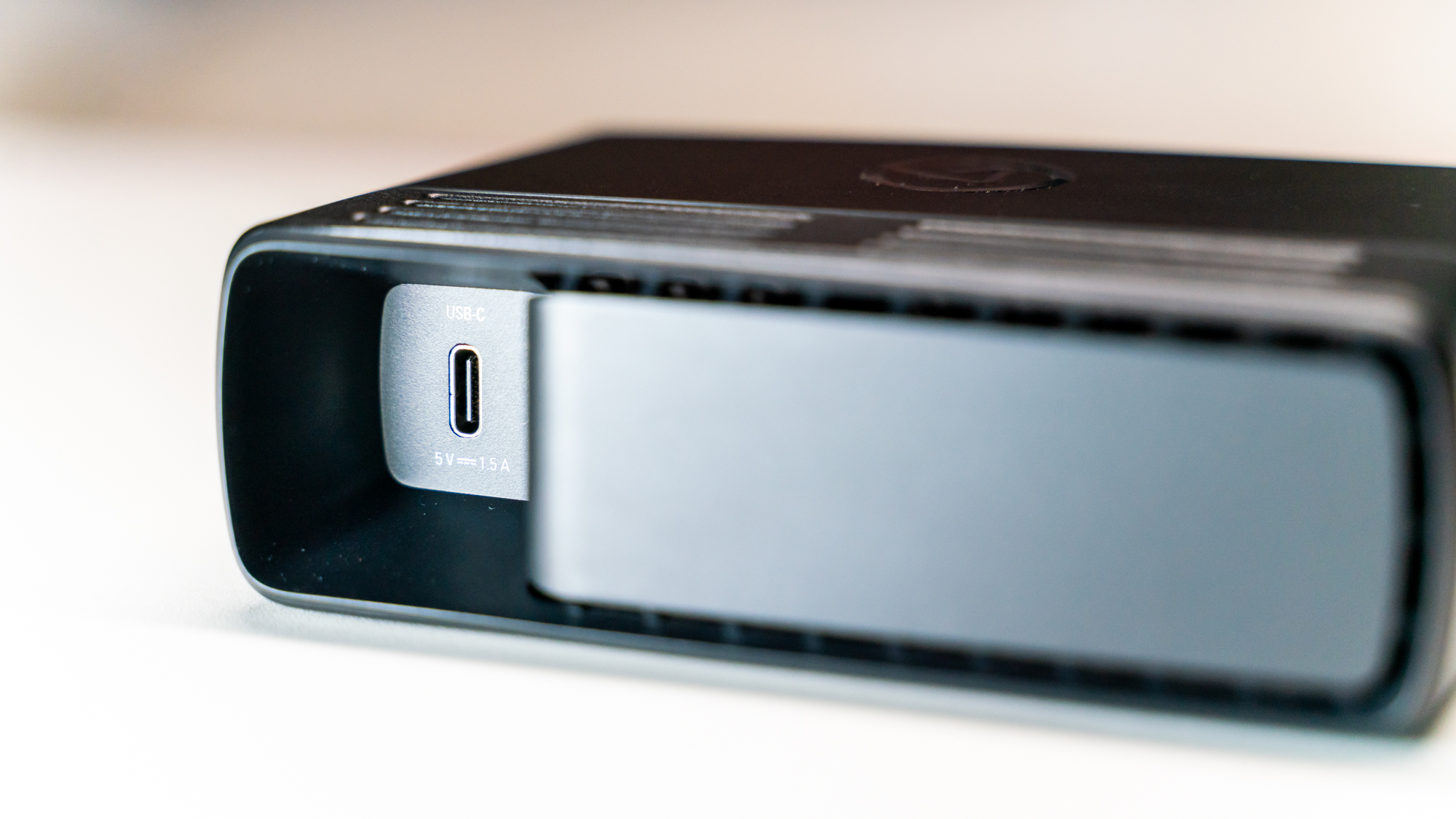
Being plug-and-play, like the Facecam, it’s blissfully fast and easy to set up, and its USB-C connectivity makes it Mac-friendly. The USB-C cable feels robust and high quality but is very flexible, making it easy to put away or get out of the way. Sadly, there’s no physical privacy shutter or cover, unlike the Facecam… at least, not included in the box.
Meanwhile, Elgato’s Camera Hub seems to have been upgraded to offer better support for the Facecam Pro. It’ll also give you a lot of control over the webcam’s settings, which means you’ll have more creative control over your exposures. It’ll let you adjust the shutter speed (1/10,000s to 1/30s) and ISO (100 to 3200), set the white balance anywhere from 2500K to 12,000K, digitally pan and tilt the lens, and even change the focus manually. You can even save your current or preferred settings, thanks to the built-in flash memory.
The Elgato Facecam Pro’s auto-exposure and auto-focusing are pretty spot-on – and we’ll get to that in the next section – but, we certainly recommend playing around with the settings, even if you’re a bit of a novice when it comes to camera exposures. There’s a lot of room for error here, and you won’t break the webcam by experimenting. Even if you set its white balance to the warmest temperature and everything looks orange, the software makes it easy to revert to the ‘right’ settings. Just toggle that switch from manual to auto.
- Design: 4.5 / 5
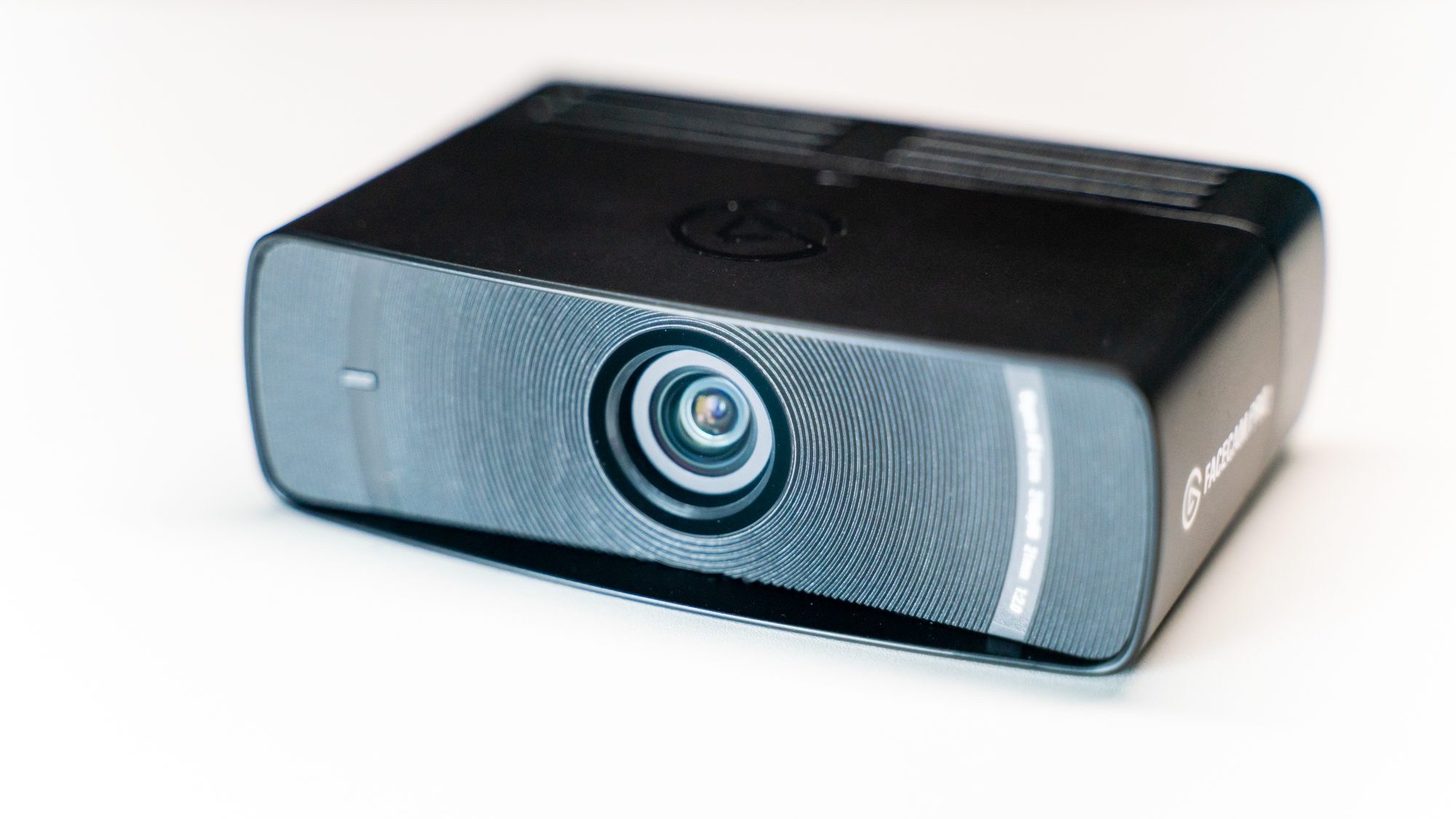
Elgato Facecam Pro: Performance
- 4K at 60fps video resolution
- Auto-focusing is on-point, especially with good lighting
- Great dynamic range, great noise reduction
Though we haven’t personally tested every premium webcam on the market, we know how many of them struggle with things like dynamic range, noise handling, and fast auto-focusing. That’s understandable as webcams don’t exactly have the biggest sensors or the fastest technology – at least, not next to the best cameras for videos.
But, the Elgato Facecam Pro is certainly taking things up a notch and setting that webcam standard higher. Previously, the Razer Kiyo Pro topped the list in terms of dynamic range and features – although when we pit it against the Elgato Facecam, the latter proved to be better at handling noise in low light.
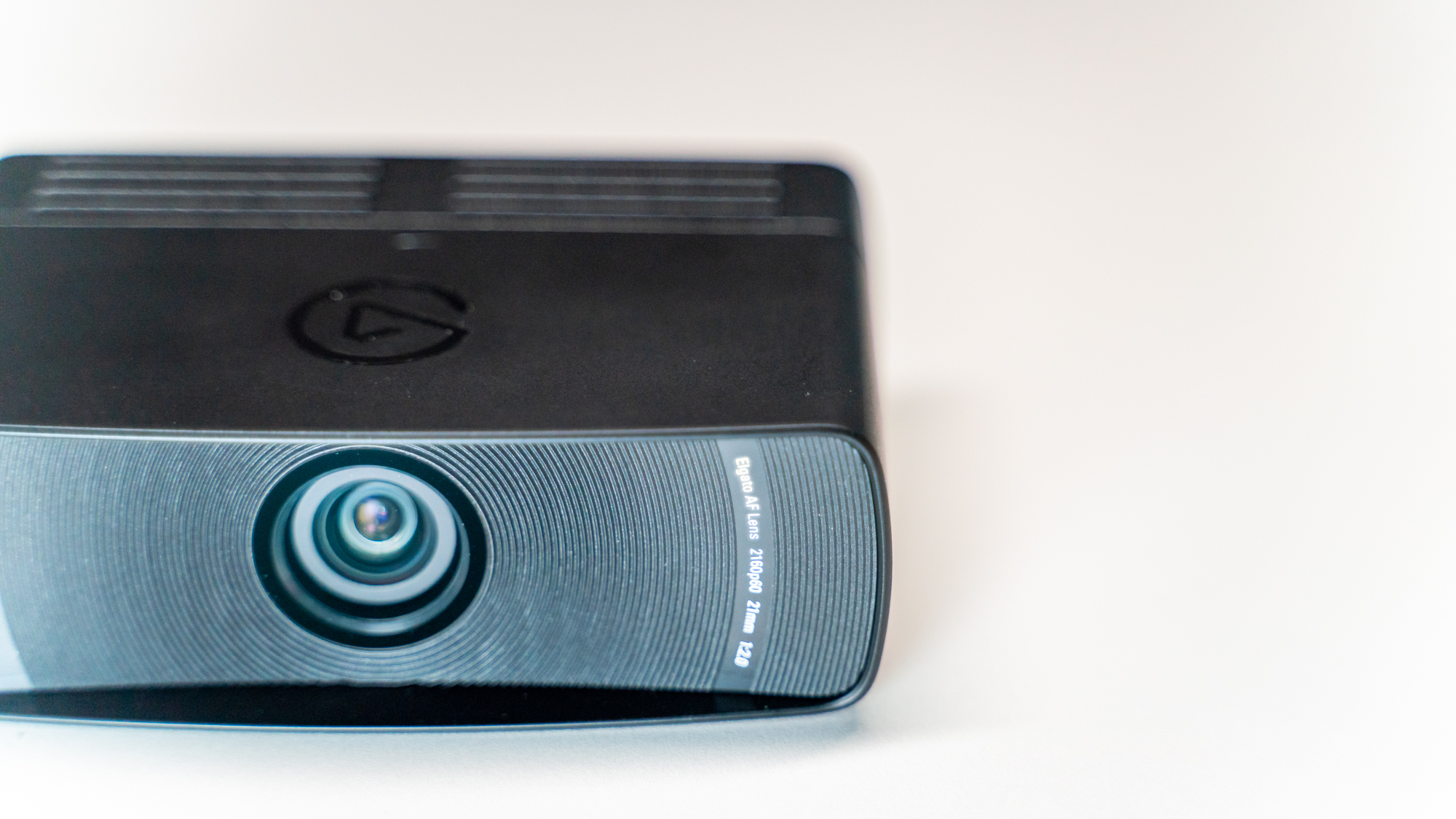
The Elgato Facecam Pro seems to have taken everything those two had on offer, combined it all, and turned it up to 10. You’re looking at sharp, highly-detailed, butter-smooth footage here, with Sony’s 1/1.8-inch Starvis sensor allowing for 4K at 60fps recording – though, of course, that means you’re getting a superior production value, whether you’re live streaming or making a TikTok video.
You’re also getting much more. The dynamic range is impressive, allowing it to retain a lot of detail in the darkest areas while keeping overblown highlights very minimal. During testing, we tried turning off all the lights, leaving only the monitor and laptop displays on, plus our phone’s flashlight shining on this reviewer’s face, and we had to work a little harder to find the overblown highlights.
Its low-light performance and noise handling are among the best we’ve seen as well. There’s some chromatic noise and a little bit of luminance noise in the darkest areas when we’re using it at night, but both are kept well under control. There’s no exaggerated, unnatural smoothing either.
Also thanks to the sensor, the picture quality you’re getting is incredibly detailed. You’ll see every hair and the smallest blemish in sharp detail. And, even when you’re zooming all the way in at 1080p, these details are well-preserved – much better than you’d have on a 1080p webcam, for sure. Do keep in mind, however, that we’re still dealing with digital – not optical – zoom here, so it’s never going to be the sharpest quality.
Thanks to its 60fps recording capability, you’re also getting crisp and smooth movements. We haven’t seen any signs of ghosting during video calls or when recording videos. And, those extra frames should be very useful when you’re hoping to get some slow-motion clips.
Auto-focusing is on-point as well, incredibly snappy and smooth in well-lit conditions, whether the subject is four inches away or all the way in the back of the room. It isn’t as fast in low-light situations, but that’s true for most cameras out there – even high-end full-frame ones – so that’s unsurprising. Plus, it still hits the mark and smoothly. That is, it doesn’t struggle to find focus in low light; it just does it slower.
If you want to control the focus, you can also toggle it on Camera Hub to manual and set it yourself, either via the distance slider or using the three distance presets: near (6 inches), mid (32 inches), and far (50 inches). This comes in handy when there are several people in the frame, but you don’t want your footage to be constantly adjusting its focus.
Also on Camera Hub is the ability to pan and tilt. Like the zoom function, those are done digitally, so don’t expect that lens to move or the quality to be just as good. But, these are still very handy, especially when you want to keep your frame tight but don’t want to physically adjust the webcam.
This capability is done on the hardware level, however, so it works with other apps like Zoom and Microsoft Teams. The only issue is you still need to make the adjustments on Camera Hub, which is a little inconvenient. It’s less tedious if you own a Stream Deck, however, as you can set four pan/tilt presents and quickly change from one to the other using the device.
- Performance: 4.5 / 5
Should I buy the Elgato Facecam Pro?
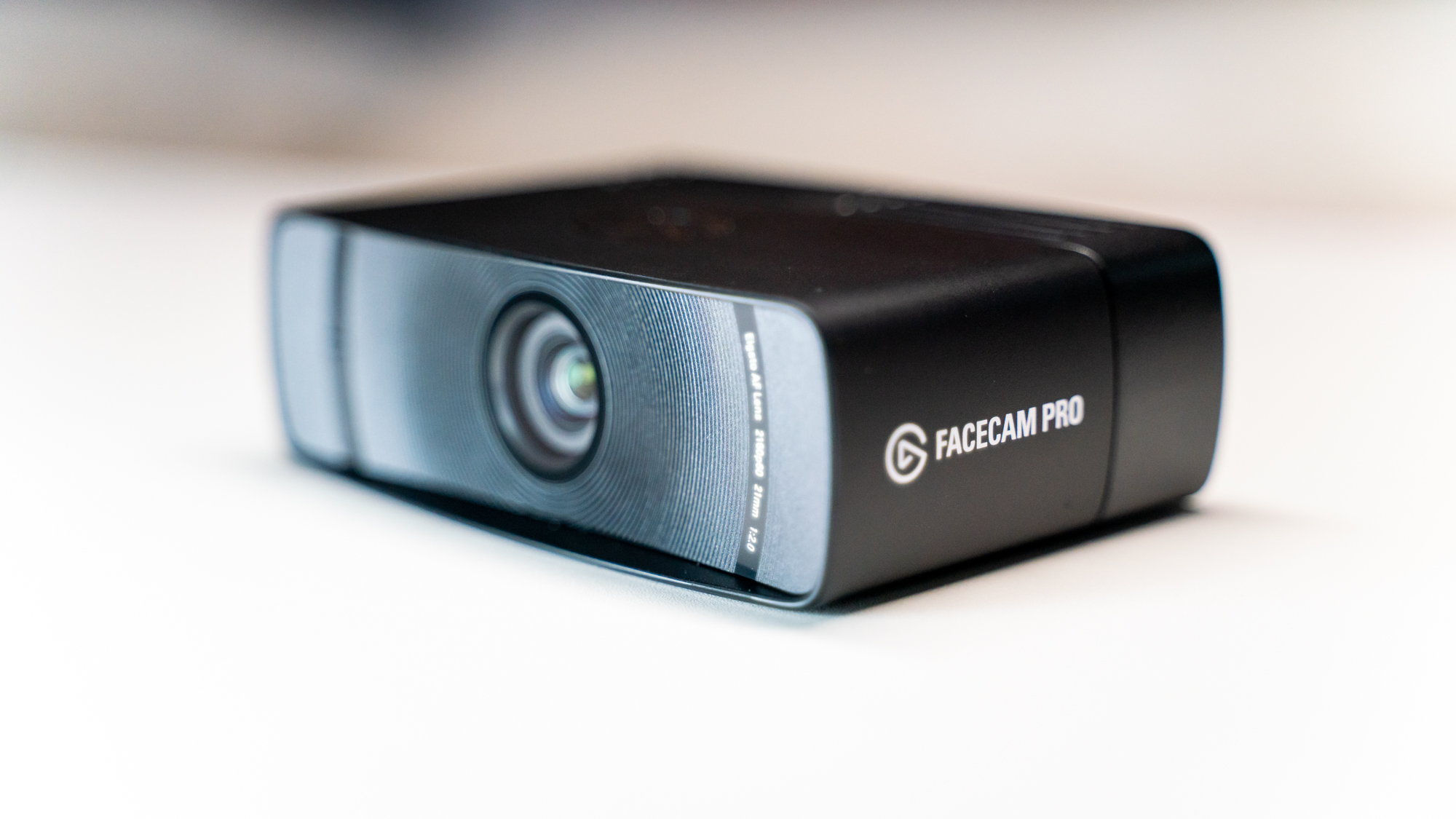
Buy it if...
You are a content creator with a big budget
The Elgato Facecam Pro’s 4K at 60fps shooting capabilities, wide dynamic range, and great noise reduction – not to mention a lot of manual controls – make it a versatile and highly capable tool for creating high-quality content.
You want a 4K webcam that shoots at 60fps
This is the first 4K webcam that records at 60fps for butter-smooth footage. All the other 4K webcams on the market still shoot at 30fps.
You’ve got extra cash you’re itching to spend
This is an expensive webcam, among the priciest on the consumer market, but if you’ve got some extra cash lying around, it’s a future-proof webcam that’s worth the money if you want to be an early adopter.
Don't buy it if...
You only use your webcam for meetings and personal video calls
This is a pro-level tool whose prowess and features will only be maximized by pro users. If you’re just a casual user, this is overkill.
You want to travel light
This is bigger than most consumer webcams, so it isn’t the most travel-friendly companion… even if it is lighter than it looks.
You’re feeling the cost of living crisis
If you’re on a budget and not a content creator, you’re better off spending your money on a cheaper alternative. You’re not going to make the most of that 4K at 60fps capability anyway.
Elgato Facecam Pro: Report card
| Value | The Elgato Facecam Pro isn’t cheap, but it’s certainly a worthy investment if you have the budget for it. | 3.5 / 5 |
| Design | This is a massive webcam that’s better suited on a monitor or standalone mount. It is plug-and-play so set-up is easy. | 4.5 / 5 |
| Performance | With its wide dynamic range, great noise handling, and snappy auto-focusing, it’s one of the best-performing webcams we’ve tested. | 4.5 / 5 |
| Total | It’s hard to give it a perfect score when it’s out of most people’s budget. However, if you’re a content creator, it’s certainly worth checking out. | 4 / 5 |
- First reviewed November 2022
How we test
We pride ourselves on our independence and our rigorous review-testing process, offering up long-term attention to the products we review and making sure our reviews are updated and maintained - regardless of when a device was released, if you can still buy it, it's on our radar.

Michelle Rae Uy is the former Computing Reviews and Buying Guides Editor at TechRadar. She's a Los Angeles-based tech, travel and lifestyle writer covering a wide range of topics, from computing to the latest in green commutes to the best hiking trails. She's an ambivert who enjoys communing with nature and traveling for months at a time just as much as watching movies and playing sim games at home. That also means that she has a lot more avenues to explore in terms of understanding how tech can improve the different aspects of our lives.
